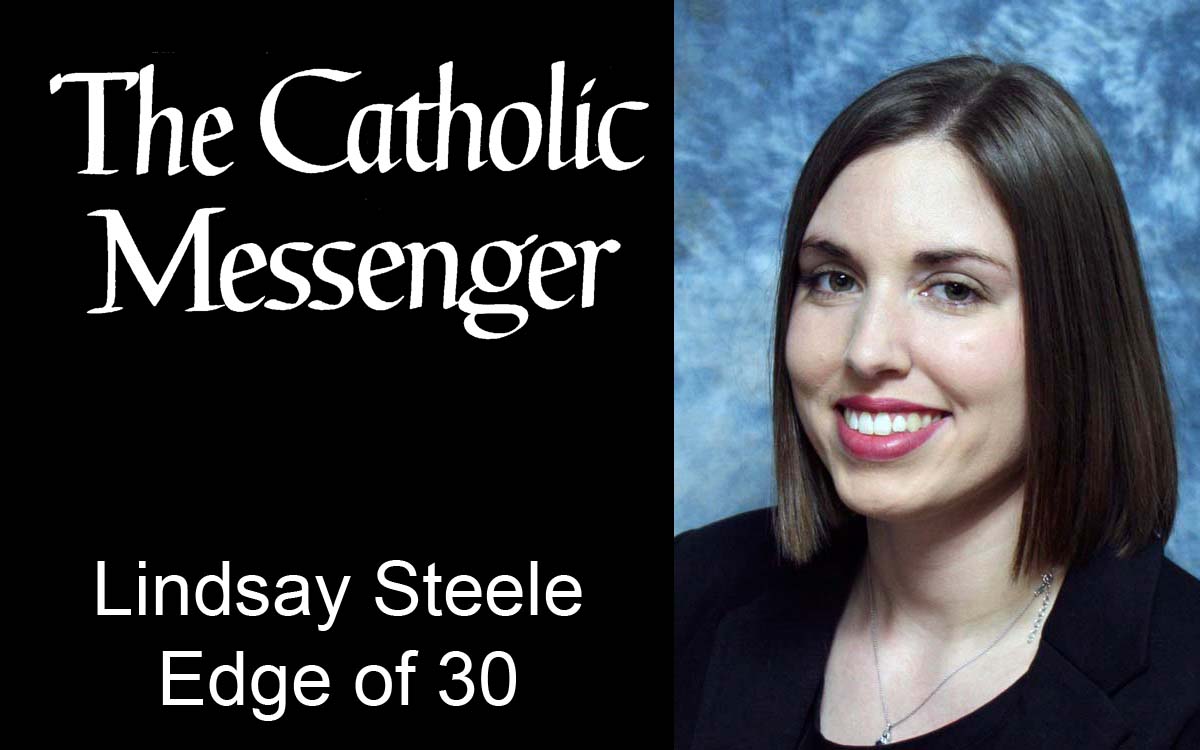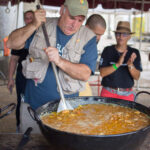By Lindsay Steele
I’ve been fortunate to learn about Mexican culture through my parish, St. Mary’s in Davenport, and my friend Bety, who grew up in Mexico and babysits my son twice a week. Last month, I finally got around to watching the Disney-Pixar animated film “Coco,” which features the saga of a fictional Mexican family on Day of the Dead (a special holiday for honoring ancestors). For the first time, I was able to see a lot of these familiar traditions and cultural values play out on the “big screen.”
 The producers of Coco did extensive research to make sure they created an authentic picture of Mexican culture, rather than a caricature. Bety said the movie brought back a lot of memories from her childhood. There were elements in the movie that I immediately recognized, as well. The “papel picado” tissue paper banners shown in the beginning of the movie are very similar to the ones hung at St. Mary’s during Our Lady of Guadalupe celebrations. The sparkly pro-wrestling costume hanging on the clothesline reminded me of Father Guillermo Trevino and how much his family loves the sport. Dishes like tamales, sweet bread and chorizo all had their moments in the film, too, giving me a craving for some of the delicious authentic foods I’ve been able to enjoy on my trips to Hispanic parishes in the diocese (including my own).
The producers of Coco did extensive research to make sure they created an authentic picture of Mexican culture, rather than a caricature. Bety said the movie brought back a lot of memories from her childhood. There were elements in the movie that I immediately recognized, as well. The “papel picado” tissue paper banners shown in the beginning of the movie are very similar to the ones hung at St. Mary’s during Our Lady of Guadalupe celebrations. The sparkly pro-wrestling costume hanging on the clothesline reminded me of Father Guillermo Trevino and how much his family loves the sport. Dishes like tamales, sweet bread and chorizo all had their moments in the film, too, giving me a craving for some of the delicious authentic foods I’ve been able to enjoy on my trips to Hispanic parishes in the diocese (including my own).
As someone from an Anglo background, I didn’t understand all the references. The humor in the scene where the grandmother throws her chancla (sandal) to scare away a stray dog went over my head, pun intended. However, considering the Spanish version of Coco is now the highest-grossing movie ever in Mexico, it’s safe to say those with an intimate knowledge of the culture definitely got the jokes.
Of course, culture is so much more than just decorations, food and footwear. At the heart of Mexican culture is the family unit. The script of Coco contains several variations of the following mantra: “Nothing is more important than family.” While not all Mexican and Mexican-American families are alike, a close-knit family is considered the ideal. All generations are considered important and, in my observation, there isn’t much distinction between immediate family and extended family. Life is meant to be shared with all members of the family.
In Coco, we see that four generations of the Rivera family are living and working together — not always in perfect harmony, but together.
Mama Coco is nearly 100 years old and experiences problems with her memory. The love and respect shown to her is evident in every generation’s interactions with her. Mama Coco’s daughter Elena’s stern expression softens considerably when she sees her mother, even as Mama Coco says, “Who are you?” Though saddened by the idea that her mom is forgetting her, Elena is generous with affection and reassurance. Mama Coco’s 12-year-old great-grandson, Miguel, says that although she rarely responds, “It’s good to talk to her anyway.” He is seen sharing his orange slices with Mama Coco and telling her lively stories.
This love is also given to relatives who have passed away. On Day of the Dead, stories are shared, favorite foods of the deceased are enjoyed, and prayers are raised for family members who have died.
Through friends and fellow parishioners, I’ve been able to see how people in real life live out their values and traditions, and I’m grateful for it. I realize that negative stereotypes exist, but there is so much to appreciate about Mexican culture. Getting to know people of Mexican heritage and taking part in their traditions has allowed me to see that.
(Editor’s note: Lindsay Steele is a reporter for The Catholic Messenger. Contact her at steele @davenportdiocese.org.)











